
Utilities include a bunch of boring yet essential stocks for any retirement portfolio. But what are they exactly? Why should you hold them? What to look for? Today, I do a complete overview of this sector and its five subsectors.
You probably know by now that I am French-Canadian and my mother tongue is not English. And the first time I heard the word “utilities”, I thought this sounds like “utile” in French. In French, utile means “useful”, and it is pretty much a very good definition on utilities because they provide you with power, electricity, gas, and water.

What Are Utilities?
First, it’s good to know that there are five different subsectors in utilities.
1. Renewables Utilities
Refers to renewable ernegy stocks like wind, solar, and hydroelectricity. It is a thriving subsector in which there is a lot of money invested in recent years.
A good example could be Algonquin Power (AQN.TO), a Canadian company that pays its dividend in USD. Within its distribution group, Algonquin owns and operates regulated water, natural gas, and electricity distribution utilities in the United States. AQN had about 120,000 clients in 2013 and now serves 762,000 clients. It achieved this impressive growth through acquisitions.
AQN shows a double-digit earnings growth potential for the foreseeable future but investors should expect a short-term slowdown due to the economic lockdown.
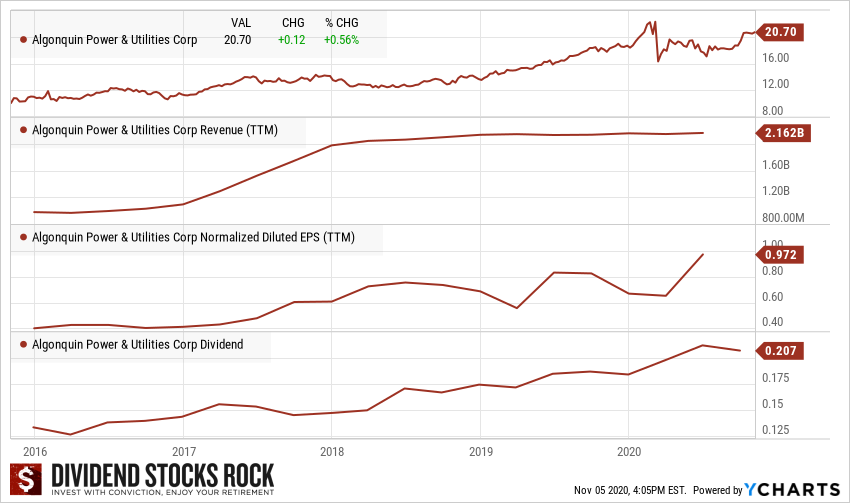
2. Diversified Utilities
Includes companies that are active in many types of utilities; from storage transmission to electricty, and railroads. Some of hese businesseses even have pipelines in their core activities. Usually, diversified utilities are very stable and enjoy a large geographic exposure.
One of my favorite examples would be Brookfield Infrastructure (BIP/BIP.UN.TO). It focuses on acquiring infrastructure assets that have low maintenance capital costs and high barriers to entry. The company’s segments consist of Utilities, Transport, Energy businesses, and Data Infrastructure.
Brookfield has $3B in liquidity, no significant debt maturities in the next 5 years and it is backed by Brookfield Assets Managements (BAM).
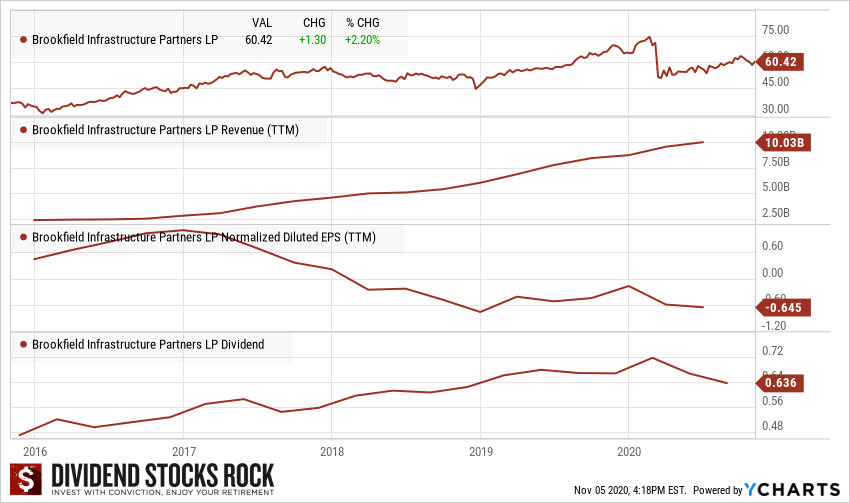
3. Electric Utilities
The name says it all! These utilities decided to focus on electricity. It could either be related to its production or to its transmission or both. Again, such companies are usually very stable and reliable dividend payers.
The one that comes to my mind is Duke Energy (DUK), one of the largest U.S. utilities, with regulated utilities in the Carolinas, Indiana, Florida, Ohio, and Kentucky that deliver electricity and gas to more than 7 million customers.
The company shows a strong business model and a focus on stable revenue sources. Duke works with regulators to increase their rates gradually. Since the company has several projects (read large CAPEX), DUK should be able to continue these raising-rate strategies for several years.
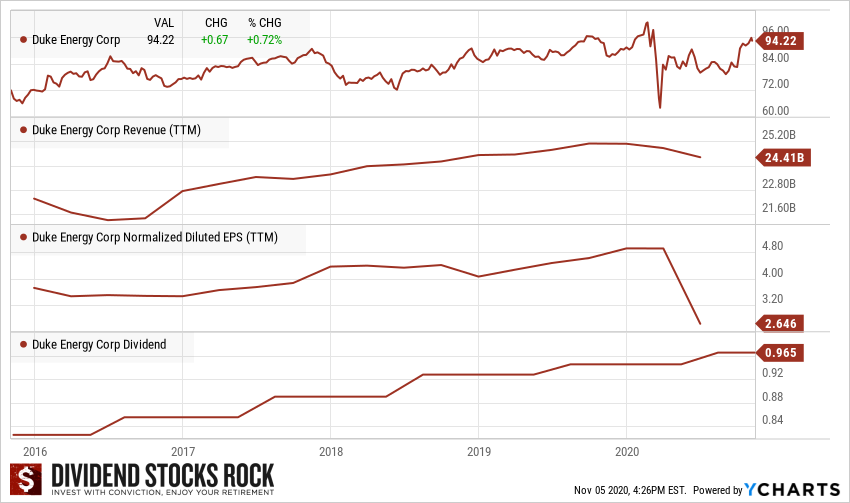
4. Natural Gas Utilities
Utilities in this subsector are obvisouly concentrated in natural gas. It could either be related to its production or to its transmission or both. Like other utilities, an investment in natural gas stocks is usually made on the classic assumption of buying a sustainable source of income.
Atmos (ATO) is the largest pure-play into distribution, storage, and pipelines for natural gas. It serves more than 3 million customers in Texas, Colorado, Kansas, Kentucky, Louisiana, Mississippi, Tennessee, and Virginia. This protects the company from an unfavorable ruling. As it’s the largest natural gas utility, Atmos enjoys economy of scale.
Most of Atmos’ operations are ultimately regulated by the Texas Railroad Commission which is known to be relatively good for shareholders. This should be enough to generate a high-single-digit earnings growth rate.
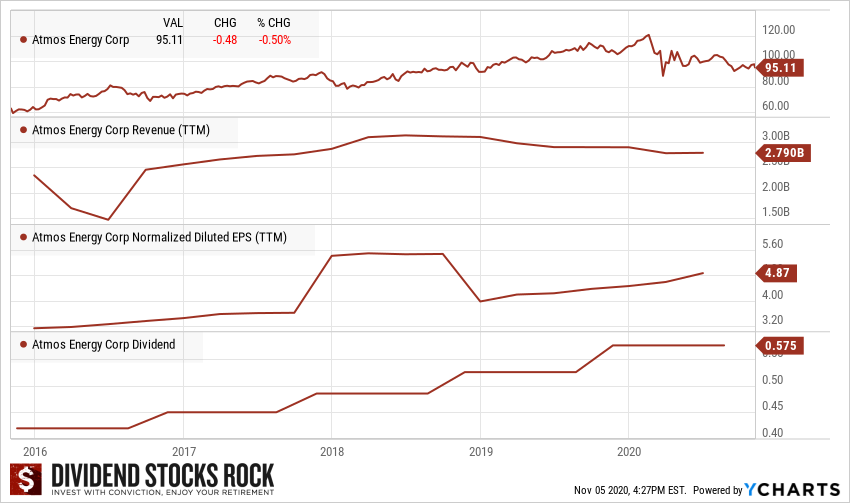
5. Regulated Waters Utilities
The water utilities are quite popular because they have lots of growth possibilities for the upcoming years. Many water connections need major upgrades, which also means that companies can ask for a tariff rates for their customers. This is obviously an opportunity to make more money.
American Water Works (AWK) fits this subsector perfectly. Founded in 1886, AWK is the largest investor-owned U.S. water and wastewater utility, serving approximately 3.5 million customers in 16 states. It provides water and wastewater services to residential, commercial, and industrial customers and operates predominantly in regulated markets, which account for about 90% of earnings.
AWK is a real money-making machine with constantly increasing cash flow. The only problem about AWK is that you will rarely find it at discount and the stock only offers a ~1.50% yield.
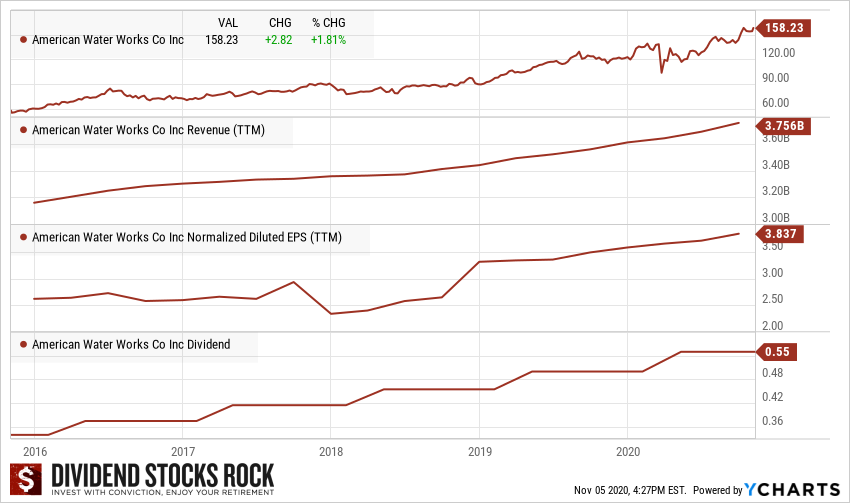
If you’re curious about the difference between regulated and deregulated utilities, I’ve explained it in the video right below. You’ll often see these two terms in utilities’ company description. Knowing the difference will help you understand the business model.
Why Should You Hold Utilities?
To be honest, utilities are quite boring. But it’s a good thing when you look for stability! For retirees, utilities are also a good way to reach a decent yield and generate more income.
Boring, but Reliable
A great advantage if the fact that those businesses are stable and easy to predict in terms of cash flow. Most of the time, quarterly earnings or investors presentations will also show their capital expenditures (CapEx projects). Utilities will tell you upfront things like: “We will invest two billions per year for the next five years and we expect to increase our earnings by 6% per year.” Then, you’ll have the dividend growth policy attached to it. This is quite reassuring in times of market volatility; you can sleep well with these in your portfolio.
In other words, utilities will not go away, regardless of what’s happening. No matter if there’s a recession, a pandemic, or an election, people will need to drink water, to heat their home, and to have electricity.
Enjoyable Yield
Many utilities will offer decent yield because they usually target a 50-60% distribution rate. Utilities in the water industry show yields that are not impressive. However, they’ll come with dividend growth, which is really good.
Also note that the dividend discount model works very well with utilities because there’s a lot of value put into the dividend payment potential.
Potential Downside: Their Debt Level
It’s been over 10 years that interest rates are super low. As those businesses are capital intensive, they need lots of debts to finance their projects. Because interest rates are very low, it’s very easy for them to borrow lots of money to grow.
Therefore, take a small detour to look at their long-term debts and see how it has been paid and how cash flow is being generated to make sure that they can afford this kind of debt, even in the case of interest rate rises.
2020 Utilities List With Added Metrics
I’ve used Dividend Stocks Rock resources to pull out the list of all utilities being traded in Canada or in the US. You can play around revenue growth, earnings growth, dividend growth, payout ratios, etc. It should really help you in selecting the best utilities for your portfolio.
Download the List Free Now!
The post What Are Utilities and Why You Should Hold Some appeared first on The Dividend Guy Blog.
